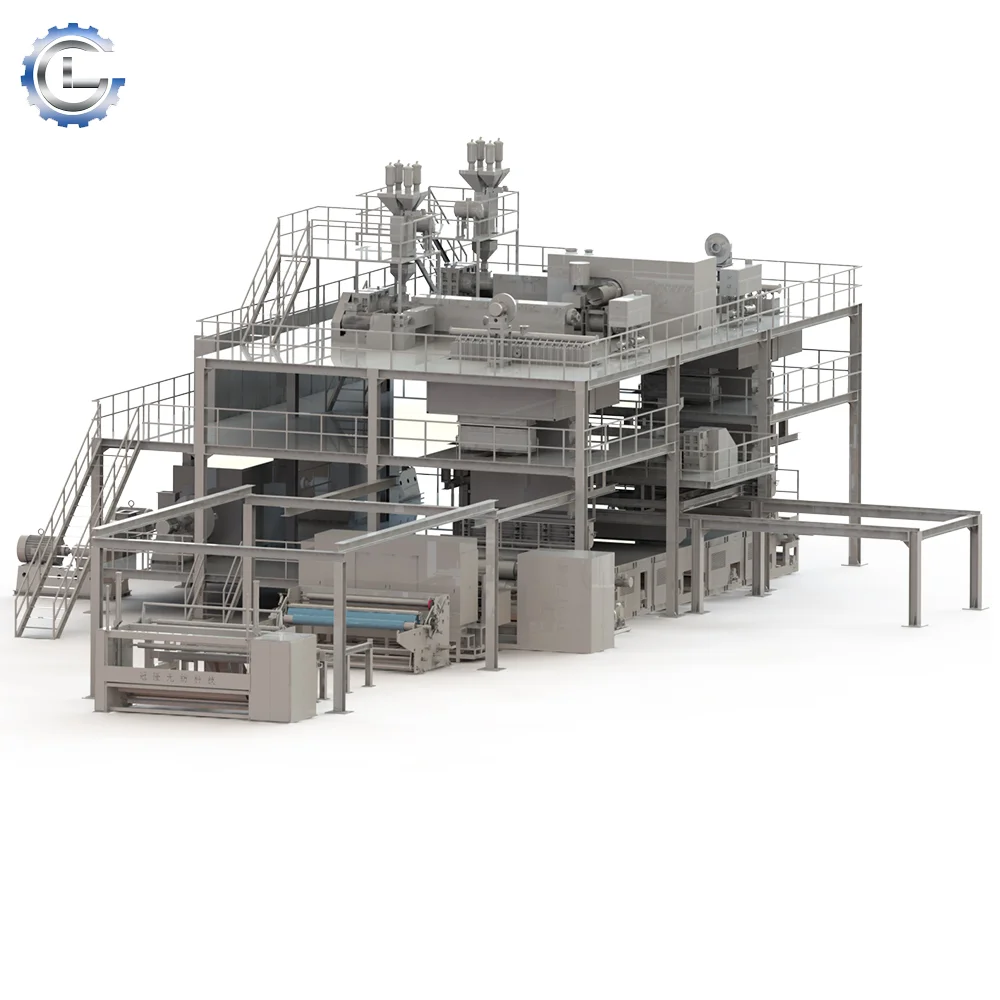Спрос на нетканые материалы резко возрос в различных отраслях промышленности., благодаря своим уникальным свойствам и применению. Одним из самых популярных методов производства нетканых материалов является процесс спанбонд., which is carried out using a PP spunbond nonwoven production line. This advanced manufacturing technique involves several integrated steps that transform polypropylene (ПП) granules into high-quality nonwoven fabrics. В этом посте, we’ll explore the spunbond process in detail, highlighting its critical stages and the benefits of investing in this technology.

The Spunbond Process Explained
The spunbond process is a continuous operation that involves multiple steps, each crucial for producing the final nonwoven fabric. Here’s a breakdown of the process:
- Polymer Feeding: The journey begins with the feeding of PP granules into the machine. These granules are combined with any necessary additives to enhance the properties of the final product.
- Melting: The PP granules are heated and melted to form a viscous polymer. This step is critical as it prepares the material for the subsequent processes.
- Фильтрация: After melting, the polymer is filtered to remove any impurities. This ensures that the final product is free from defects and maintains high quality.
- Melt Pumping: The molten polymer is then pumped to the spinneret at a controlled rate. This step is vital for maintaining consistent production speeds and quality.
- Spinning: The molten polymer is extruded through a spinneret, creating continuous filaments. These filaments are then laid down in a random pattern to form the fabric.
- закалка: Once the filaments are formed, they are rapidly cooled using a quenching system. This step solidifies the filaments and ensures they maintain their integrity.
- Drawing: The solidified filaments are then drawn to increase their strength and elasticity. This process also helps align the fibers, enhancing the fabric’s overall properties.
- Web Formation: The drawn filaments are collected to form a web. This web is the foundation of the nonwoven fabric and can vary in density and thickness depending on the application.
- Склеивание: The final step involves bonding the web using heat and pressure. This process fuses the fibers together, creating a durable and cohesive nonwoven fabric.
- Winding: Finally, the bonded fabric is wound onto rolls, ready for further processing or distribution.
Benefits of the Spunbond Process
The spunbond process offers several advantages that make it a preferred method for producing nonwoven fabrics:
- High Production Efficiency: The continuous nature of the process allows for high output rates, making it suitable for large-scale manufacturing.
- Versatility: The PP spunbond nonwoven production line can produce fabrics in various weights, thicknesses, and properties, catering to diverse industrial needs.
- Cost-Effectiveness: By investing in a high-quality spunbond production line, manufacturers can benefit from lower material costs and increased operational efficiency.
- Экологичный: Nonwoven fabrics produced through the spunbond process can be made from recyclable materials, contributing to sustainability efforts in the textile industry.
Understanding Nonwoven Machine Prices
When considering a PP spunbond nonwoven production line, it’s essential to evaluate nonwoven machine prices. Prices can vary based on several factors, including the machine’s capacity, technology, and features. Investing in a reliable and efficient production line can lead to significant cost savings in the long run, making it a wise choice for manufacturers looking to enhance their operations.
